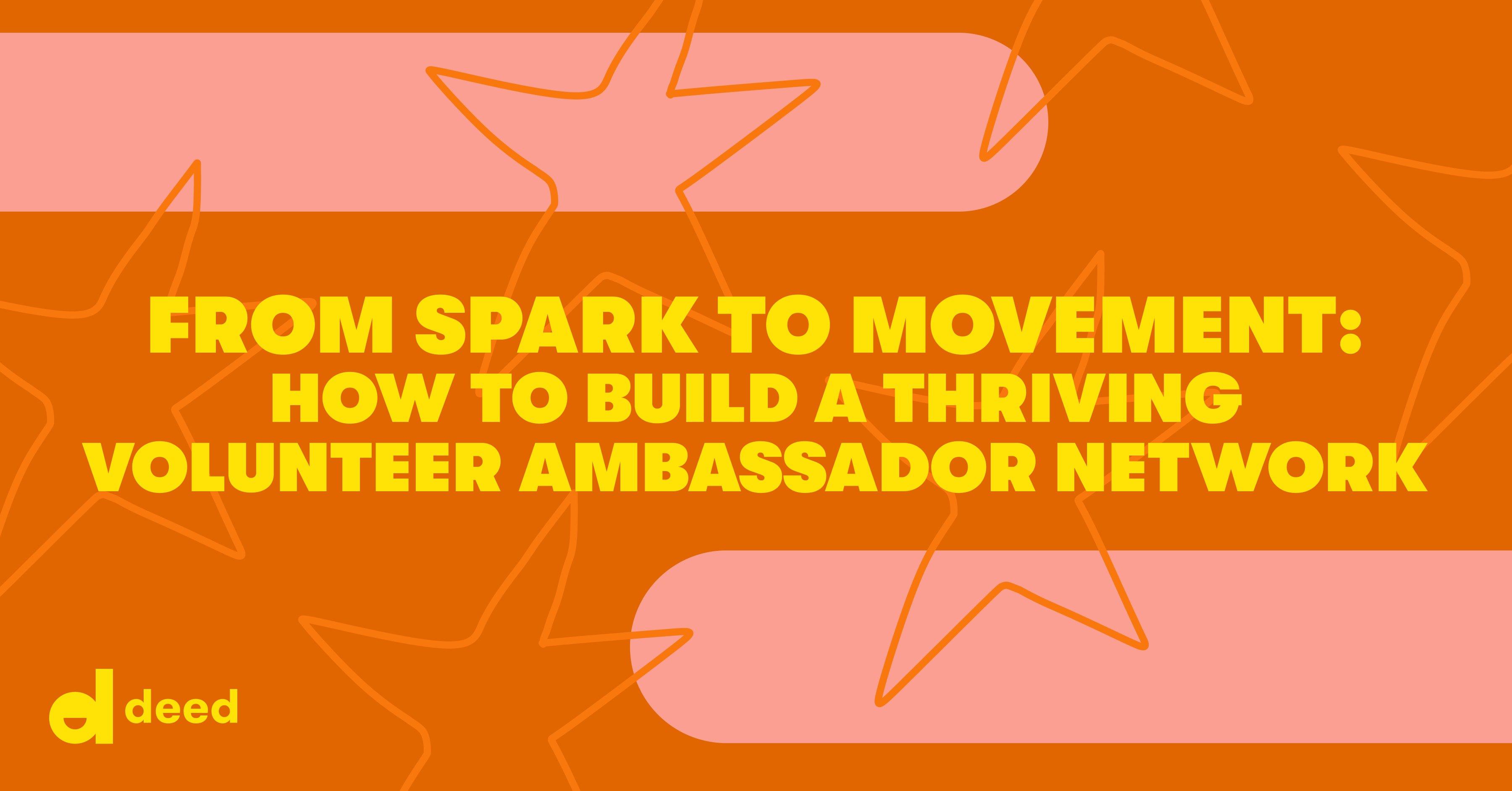Webinar Recap: From Spark to Movement - How CSR Leaders at Ford and HMH Built Thriving Volunteer Ambassador Networks
What does it take to turn employee enthusiasm for doing good into a sustainable, scalable movement? At Deed’s recent webinar “From Spark to Movement,” CSR leaders from Ford Motor Company and HMH pulled back the curtain on their evolving volunteer ambassador networks—what’s working, what they’re still figuring out, and how they’re fueling grassroots impact from the ground up.
Below are some of the biggest takeaways from the conversation with Stephanie Smith, Ford’s Global Volunteer Engagement Lead, and Katie Callahan, CSR Program Manager at HMH.
💡 Start Small, Build Strong
Both leaders emphasized the importance of piloting before scaling. Ford is currently in year one of a formal volunteer ambassador pilot, while HMH has spent over a decade building its grassroots CARES Councils.
Ford is starting with U.S. salaried employees, assessing engagement, and planning a global rollout over time. HMH, on the other hand, now has a robust structure of regional CARES Councils with defined roles (chair, awareness lead, treasurer, secretary, etc.)—a testament to what’s possible with sustained commitment.
Pro tip: Pilot for at least 6–12 months to gather meaningful feedback, build trust, and refine your approach before launching company-wide.
👥 Define Clear Roles—and Recognize the Effort
The structure of a volunteer network matters. At Ford, volunteer ambassadors host events and spread the word locally, while chairs lead regional coordination and communication. HMH assigns specific council roles, such as “awareness lead,” the position title for employees trained to send branded, uniform communications to support impact efforts.
Recognition is key: Both companies emphasized non-monetary forms of appreciation—storytelling in newsletters, thank-you emails CC’ing managers, leadership shoutouts, and donation credits through Deed.
“Sometimes the best recognition is free,” said Katie. “A manager CC’d on a thank-you email can go a long way.”
🧭 Flexibility Is a Feature, Not a Bug
Especially in a post-pandemic, hybrid world, a one-size-fits-all model doesn’t cut it. Stephanie stressed the need to flex expectations—for example, setting a goal of 10+ volunteers per event, but adjusting for team size and location.
Katie echoed that geography isn’t always the best organizing principle anymore. As HMH grows more remote, it’s exploring non-geographic CARES Councils to keep engagement high among distributed teams.
🧱 Processes, Buy-In, and Brand Consistency
Established processes support sustainable growth. Both leaders emphasized:
- Branded email templates and training for consistency
- Centralized tracking of hours and participation
Stephanie noted that many teams at Ford were previously tracking hours in SharePoint or Excel, and that simply centralizing data in Deed is a big step forward.
- Clear performance expectations
- Leadership buy-in—from manager approval for participation to CEO-led kickoff emails
“If your CEO is blocking their calendar to volunteer, the rest of the company will follow,” said Katie.
At HMH, the CEO personally sends the Volunteer Week calendar hold—and joins events himself!
🌎 Deskless Workers? No Problem, Just Tailor Your Approach
Ford is still piloting ways to engage and excite deskless and union-represented workers, including visiting plants and exploring creative approaches, such as in-breakroom events and digital signage.
🛠 What They’d Do Differently
Reflecting on their journeys, both leaders shared advice for those just getting started:
- Don’t overlook recognition in performance reviews. If it’s not possible to formalize, give ambassadors scripts to advocate for themselves in annual evaluations.
- Start with leadership. Whether it’s your CEO or department heads, getting influential champions early makes a big difference.
- Include everyone doing the work. At Ford, ERG leads, well-being leads, and plant site coordinators are now looped into the ambassador network—even if their original role wasn’t defined that way.
- Build community. Make sure your ambassadors know they’re part of something bigger—through summits, office hours, and internal storytelling.
🚀 Turning Passion into Purpose—at Scale
The path from a few champions to a full-blown movement is different for every company, but some things hold true across the board: Start small, stay flexible, and recognize your people.
As Katie put it, “Your volunteer network isn’t just an event planning team. They’re building something bigger than themselves.”
Want to learn more about how Deed powers grassroots employee engagement through tools like volunteering, donating, and employee resource groups?

